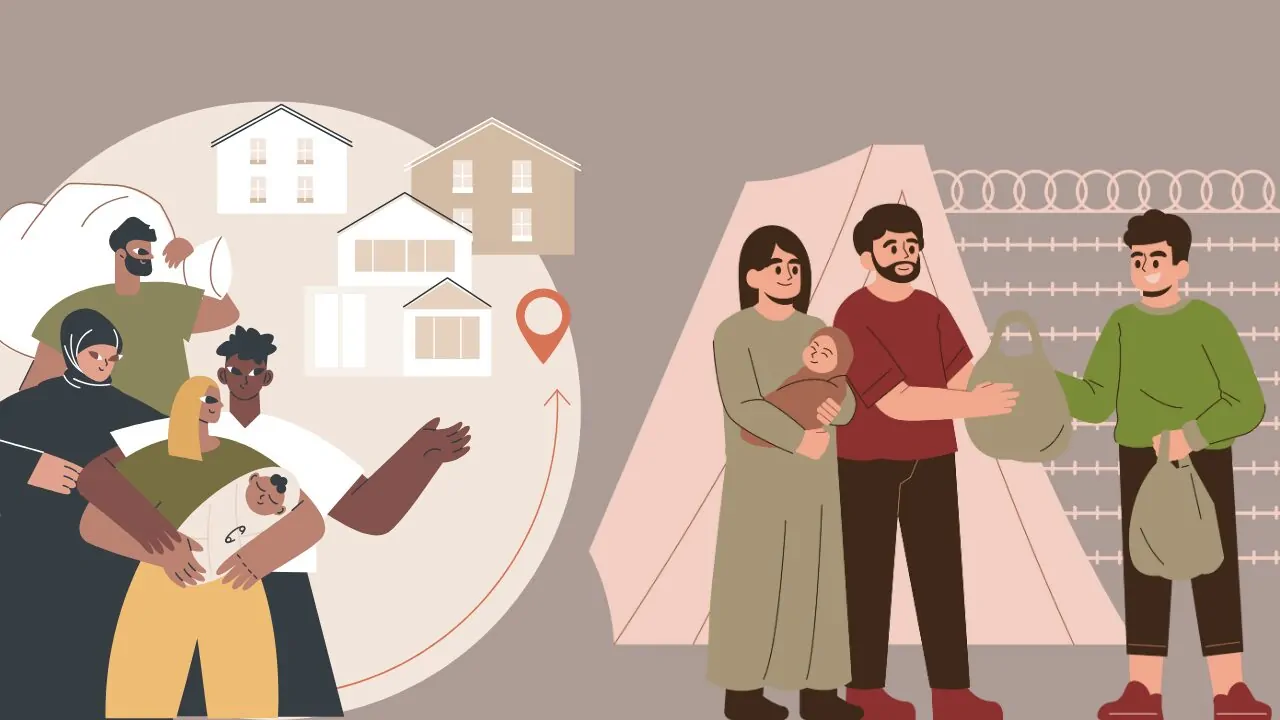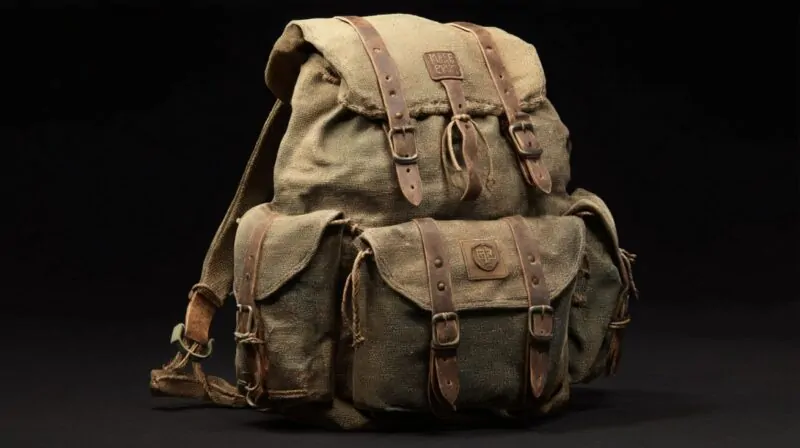The United States has long been known as a nation of immigrants, a melting pot where people worldwide come in search of better opportunities and freedom.
Today, over 45 million immigrants reside in the U.S., making up about 13.6% of the total population.
Immigration has shaped the nation’s culture, economy, and social fabric, with each wave of newcomers contributing to the growth and diversity of the country.
Since this is a trend that will not likely stop soon, I want to talk about the major reasons why immigrants choose to come to the United States.
Major Reasons for Immigration to the United States
In 2024, more than a million people crossed the Mexico-US border.
Pointing out all the reasons why immigrants come to the United States is practically impossible. However, there are several of them that are more prevalent than others.
| U.S. Immigrant Origin | Work | School | Family | Safety | Diversity |
|---|---|---|---|---|---|
| India | 3.5% | 5.6% | 4.1% | 0.0% | 0.0% |
| China | 0.3% | 6.1% | 0.9% | 0.1% | 0.0% |
| Mexico | 23.0% | 1.2% | 3.5% | 0.1% | 0.0% |
| Europe | 3.7% | 6.2% | 1.9% | 0.1% | 0.2% |
| Africa | 1.7% | 1.7% | 1.9% | 0.6% | 0.3% |
| Other Asia | 5.3% | 7.1% | 5.4% | 0.5% | 0.3% |
| Other Americas | 3.7% | 4.1% | 4.4% | 0.5% | 0.1% |
| All Others | 0.5% | 0.2% | 1.1% | 0.0% | 0.1% |
| Total | 41.8% | 32.2% | 23.2% | 1.9% | 0.9% |
Work Opportunities
One of the primary reasons people migrate to the U.S. is for work opportunities.
The American economy, with numerous industries, offers a variety of jobs, from specialized fields like engineering and IT to temporary roles in agriculture.
According to a PewResearch report, 30 million immigrants are in the US workforce
Immigrants often come to fill labor gaps, especially in sectors that require highly skilled professionals or a large, seasonal workforce.
The majority of work-based immigrants come from Mexico, with an increasing number from Asia, demonstrating how global workforce dynamics are shifting.
Education and Schooling
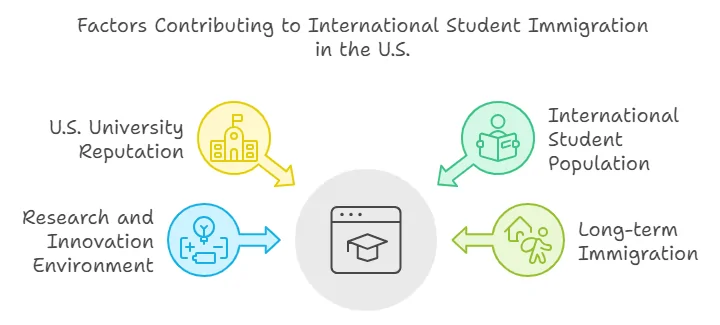
Education is another significant driver of immigration. Many people move to the U.S. to take advantage of its highly regarded universities and academic programs.
According to Statista, the US universities had more than a million foreign students, 1,057,188 to be precise.
Students from countries like China and India make up a substantial portion of international students, seeking advanced degrees and specialized training.
The influx of talent enriches American campuses and often leads to long-term immigration as many students stay in the country to work after completing their studies.
Family Reunification
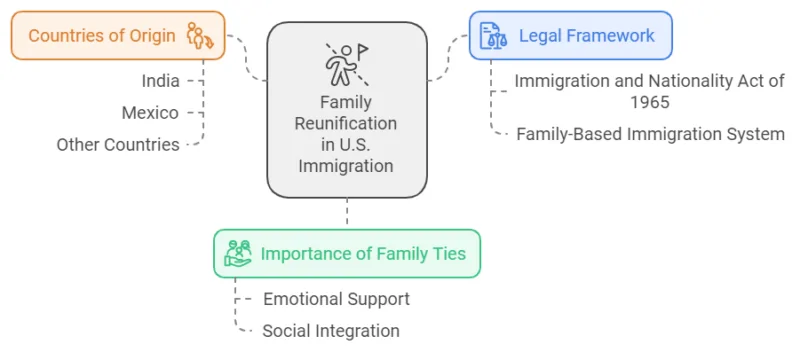
Family reunification is a key factor in U.S. immigration. Many immigrants move to the U.S. to join family members who have already settled there.
It is an aspect of immigration that is deeply embedded in U.S. policy, as the Immigration and Nationality Act of 1965 established a system that prioritizes family ties.
Family-based immigration remains a cornerstone of the overall immigration system in the United States.
Interesting Facts: In 2023, AP News released a story abnout how the US government will allow 100k Latin immigrants to reunite with their families.
Safety and Refuge
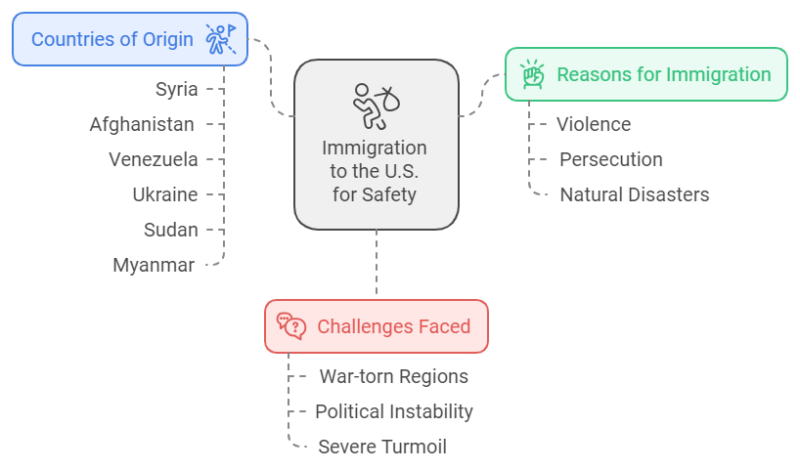
For some immigrants, the decision to move to the U.S. is driven by safety concerns.
According to the data presented by UNHCR, there are currently almost 120 million displaced people around the world.
Some of the most notable cases are:
| Country | Refugees (millions) |
|---|---|
| Syria | 6.4 |
| Afghanistan | 6.4 |
| Venezuela | 6.1 |
| Ukraine | 6.0 |
| Sudan | 2.0 |
| Myanmar | 1.3 |
The country has a history of providing a haven for those in need, and today, refugees and asylum seekers come from countries experiencing severe turmoil. Though this group represents a smaller portion of overall immigrants, their journey is often more complex, involving legal processes that aim to protect the most vulnerable. Interesting Fact: To understand the scope of how big the immigrant population is in the US, we can see PewResearch report from 2017 say there was 10.5 million of them.
Diversity Visa Program
The Diversity Visa Program is a facet of U.S. immigration policy, encouraging immigration from countries that have historically low numbers of immigrants to the U.S.
Every year, 55,000 foreigners are granted citizenship through lottery.
While it accounts for a small percentage of immigrants, it promotes cultural exchange and ensures that the immigrant population remains varied.
The program adds to the U.S.’s commitment to fostering diversity within its borders.
Historical Changes in Immigration Patterns
Historically, U.S. immigration patterns were dominated by European immigrants.
These early waves of immigrants helped shape the foundational industries of the U.S., such as manufacturing, agriculture, and infrastructure development.
However, after the 1965 Act, the demographic of immigrants began to change significantly, with more people coming from Latin America and Asia.
The shift reflected broader geopolitical and economic changes as globalization took hold and the U.S. became a more attractive destination for people from developing regions.
Today, Mexico has become the largest single contributor to the U.S. immigrant population, followed by countries in Asia such as China and India.
Read more: Mexico’s lawsuit against U.S. gun makers reaches the Supreme Court
The historical focus on European immigrants has been replaced by a more globalized system that reflects the diversity of modern migration.
Interesting Fact: There are currently around 45,000 immigrants actively serving in the U.S. military.
Shifts in Settlement Patterns
These cities provide economic opportunities and establish ethnic communities where they could find support. These cities became melting pots of cultures and languages, offering immigrants a chance to blend into a multicultural environment while maintaining ties to their heritage. These regions offer more affordable housing, job opportunities, and a different quality of life compared to the crowded urban centers. These changing settlement patterns reflect the evolving dynamics of the U.S. economy and the diverse preferences of modern immigrants. The report on U.S. immigration trends gathers quantitative data from sources like the United Nations High Commissioner for Refugees (UNHCR), Pew Research, and Statista, capturing the latest figures on immigrant populations and demographics. These data points build a factual foundation for analyzing trends in work-based migration, student immigration, and family reunification. It uses historical sources to contextualize demographic shifts, such as those following the Immigration and Nationality Act of 1965. To understand the motivations behind immigration choices, the report incorporates qualitative insights from case studies, personal accounts, and academic research, with a particular focus on work, education, family, safety, and diversity goals, paying special attention to refugees and asylum seekers. Immigration to the United States is shaped by work opportunities, education, family reunification, safety, and the pursuit of diversity. Ongoing global challenges and political shifts will keep altering these patterns, impacting both immigrants and the nation. It is uncertain whether this continue in the future.
Methodology
The Bottom Line
Sources
Related Posts:

